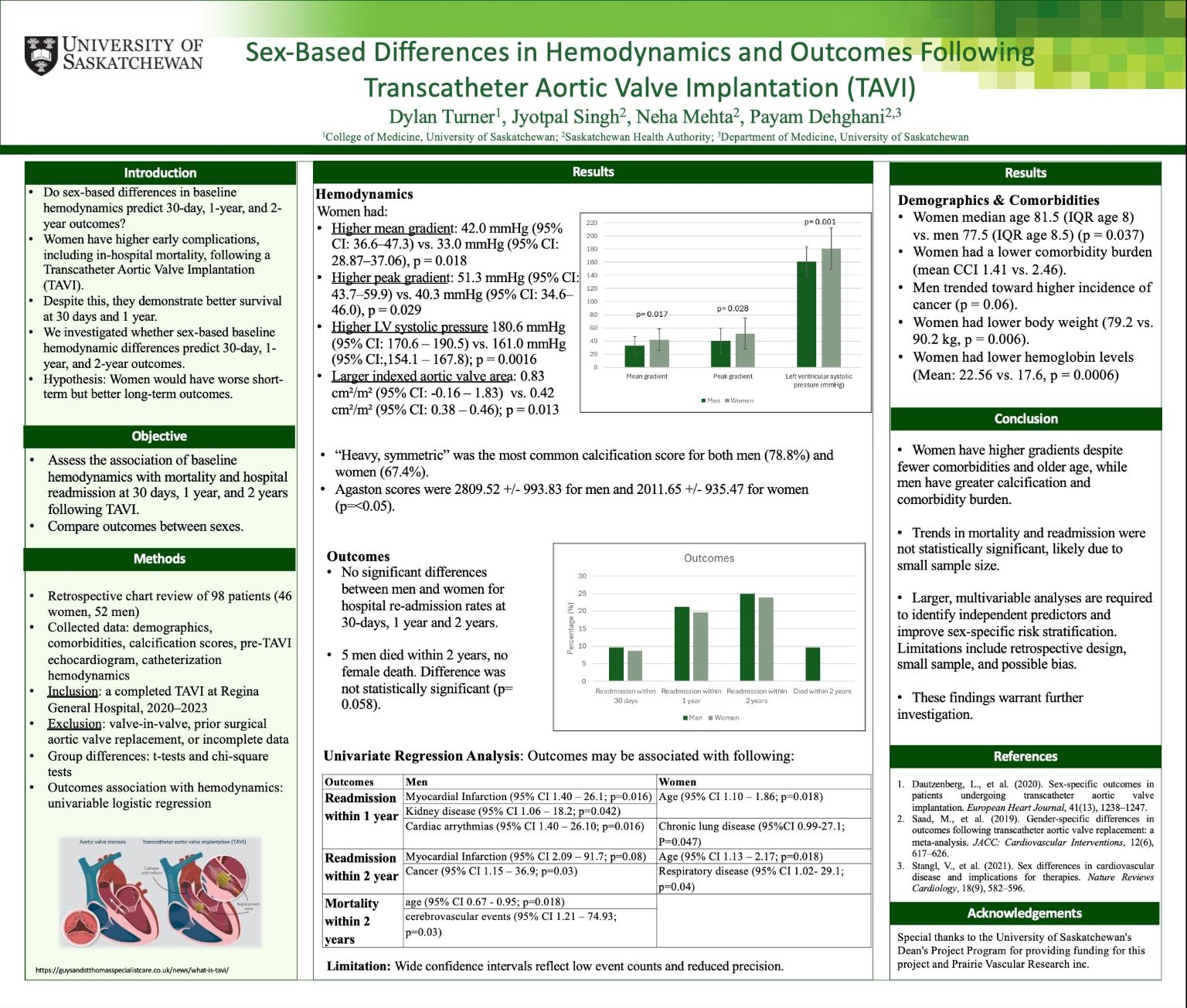
Sex-specific outcomes of patients with aortic stenosis following transcatheter aortic valve implantation (TAVI): Implications of hemodynamic parameters
Dylan Turner
Outcomes in patients undergoing transcatheter aortic valve implantation (TAVI) are known to vary by sex. To understand if hemodynamics are associated with outcomes, a retrospective chart review was conducted on 98 patients undergoing TAVI at Regina General Hospital between 2020–2023 (n=46 women). Patients with valve-in-valve TAVI and prior surgical aortic valve replacement were excluded. Comorbidities and hemodynamics were collected. Univariable logistic regression models associated hemodynamics to mortality and hospital readmission within 30-days, one, and two years. Women had higher mean (42.0 vs. 33.0 mmHg, p=0.018) and peak gradients (51.3 vs. 40.3 mmHg, p=0.029), and larger indexed aortic valve area (0.83 vs. 0.42 cm²/m², p=0.013). Agaston scores were 2809.52 +/- 993.83 for men and 2011.65 +/- 935.47 for women (p<0.05). Readmission within 2 years may be associated to myocardial infarction (p=0.08) and cancer (p=0.034) in men; age (p=0.018) and respiratory disease (p=0.045) in women. Two-year mortality for men may be associated with age (95% CI 0.67 - 0.95; p=0.018) and history of cerebrovascular events (95% CI 1.21 – 74.93; p=0.03). Mortality rates did not differ. Limitations include retrospective design, small sample, and potential bias. Sex-based hemodynamic differences may relate to TAVI outcomes and require future investigation. have identified an effective Pitx2c KD method and provided evidence of oxidative stress in cells lacking Pitx2c.
